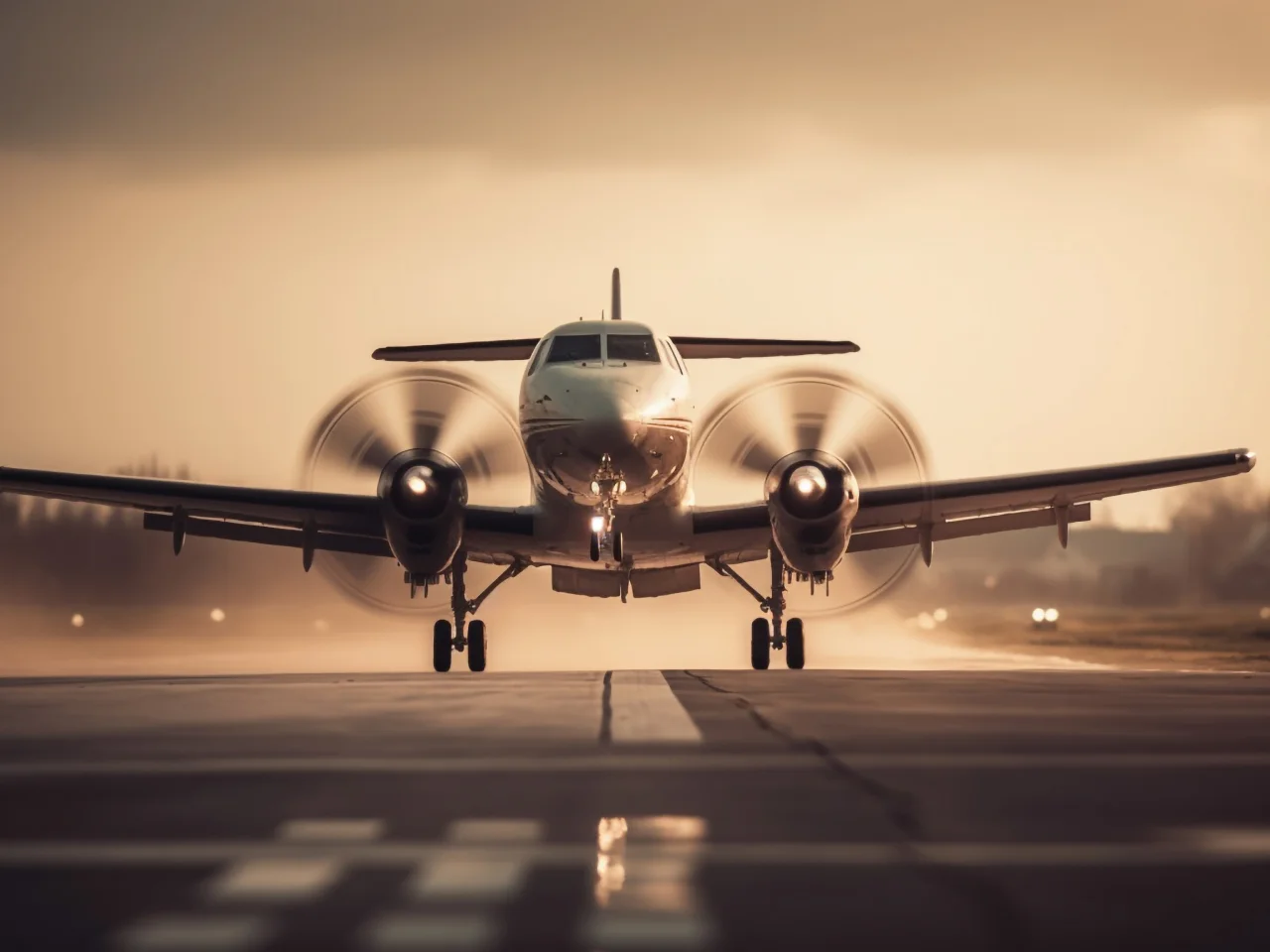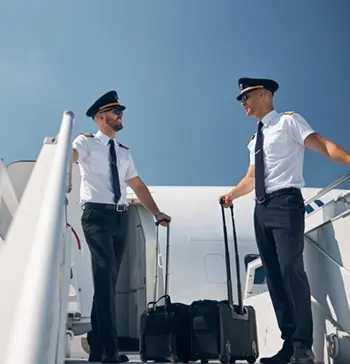
Pilot Training in Philippines For Myanmar (Burma) Students
Why Aspiring Burmese Pilots Fly Abroad for Training?
There are several reasons why aspiring Burmese pilots opt to pursue their training abroad. Firstly, the aviation industry in Myanmar is still developing, and the infrastructure for pilot training may not be as advanced or accessible compared to more established aviation hubs. Limited resources, including qualified instructors, modern training aircraft, and proper facilities, can hinder the quality of training available domestically.
Secondly, by seeking training abroad, Burmese students can expose themselves to diverse aviation environments, regulations, and best practices. This exposure broadens their skill set and prepares them for the global aviation landscape, enhancing their employability and adaptability as pilots.
Furthermore, pursuing training abroad often offers access to internationally recognized certification standards, such as those from the Federal Aviation Administration (FAA) or the European Aviation Safety Agency (EASA). These certifications can open doors to employment opportunities with airlines worldwide, providing Burmese pilots with a competitive edge in the global job market.
Overall, the decision to fly abroad for training reflects the ambition of Burmese pilots to receive high-quality education, exposure to international standards, and better career prospects in the aviation industry.
Why Do Burmese Students Choose the Philippines for Pilot Training?
Burmese students choose the Philippines as a preferred destination for pilot training due to several compelling factors. Firstly, the Philippines boasts a well-established aviation training infrastructure with numerous flight schools and training centers offering comprehensive programs tailored to international students.
Secondly, the Philippines offers a conducive learning environment characterized by favorable weather conditions, diverse airspace, and modern training aircraft. These factors contribute to efficient and effective flight training, allowing students to accumulate flight hours and experience in a relatively short period.
Moreover, the Philippines is known for its English proficiency, which is essential for aviation communication worldwide. Burmese students can benefit from studying in an English-speaking environment, improving their language skills and ensuring seamless integration into the global aviation community.
Additionally, the cost of pilot training in the Philippines is often more affordable compared to other countries, making it an attractive option for students seeking quality education without breaking the bank.
Is the Philippines Positioned to Become the Top Pilot Training Destination for Burmese Students?
While the Philippines offers many advantages for Burmese students pursuing pilot training, whether it will become the top destination depends on various factors. The Philippines has made significant strides in developing its aviation training sector and continues to attract students from around the world.
However, other countries also compete for the international student market in aviation training. Factors such as visa regulations, political stability, economic conditions, and evolving industry trends can influence students’ preferences and choices.
Nevertheless, with its established infrastructure, favorable training environment, affordability, and English proficiency, the Philippines is well-positioned to remain a top choice for Burmese students seeking quality pilot training. Continued investment in aviation education and infrastructure will further enhance its competitiveness and attractiveness as a premier destination for aspiring pilots from Myanmar and beyond.
Can a Burmese become a pilot in the Philippines (PH)?
Yes, Burmese individuals can indeed pursue pilot training in the Philippines. The Philippines offers various flight training programs that are open to international students, including those from Burma. However, there are certain requirements and procedures that Burmese individuals need to fulfill in order to become pilots in the Philippines.
Firstly, aspiring pilots must obtain the necessary visas and permits to study and work in the Philippines legally. This typically involves applying for a student visa and complying with immigration regulations. Additionally, candidates must meet the medical and English language proficiency requirements set by the Philippine aviation authorities. These standards ensure that pilots are physically fit and capable of effectively communicating in English, which is the international language of aviation.
Furthermore, Burmese individuals need to enroll in a reputable flight training school or academy that is approved by the Civil Aviation Authority of the Philippines (CAAP). This ensures that the training they receive meets international standards and prepares them adequately for a career in aviation. Upon completion of their training, aspiring pilots must pass various examinations and practical assessments to obtain the necessary licenses and certifications to fly aircraft in the Philippines and beyond.
In summary, while there are specific requirements and procedures to follow, Burmese individuals can certainly pursue their dreams of becoming pilots in the Philippines with dedication, proper planning, and adherence to regulatory guidelines.
How much does it cost to study pilot in Philippines for Burmese students?
The cost of studying to become a pilot in the Philippines can vary depending on several factors such as the flight school, type of training program, aircraft rental fees, living expenses, and duration of the course. Aspiring pilots from Burma should expect to invest a significant amount of money in their pilot training journey.
On average, the total cost of pilot training in the Philippines ranges from approximately $50,000 to $70,000 for a private pilot license (PPL) and up to $100,000 or more for advanced licenses such as a commercial pilot license (CPL) or airline transport pilot license (ATPL). These expenses typically include tuition fees, flight instructor fees, aircraft rental fees, study materials, medical examinations, visa fees, accommodation, and daily living expenses.
It’s important for Burmese students to thoroughly research and compare the costs of different flight training programs and flight schools in the Philippines to find one that fits their budget and offers quality education and training. Additionally, aspiring pilots may explore financing options such as scholarships, loans, or sponsorships to help cover the expenses associated with pilot training.
Overall, while pilot training in the Philippines can be a significant financial investment, it is a worthwhile endeavor for individuals passionate about aviation and committed to pursuing a career as a pilot.
Want to find out more about our pilot courses?
Who is eligible for pilot training in the Philippines?
Eligibility criteria for pilot training in the Philippines are set by the Civil Aviation Authority of the Philippines (CAAP) and flight training schools accredited by the authority. To be eligible for pilot training, individuals, including Burmese students, must meet certain requirements:
- Age: Generally, candidates must be at least 17 years old to begin flight training for a private pilot license (PPL). However, the age requirement may vary for different types of pilot licenses.
- Education: There are no specific educational requirements to start pilot training in the Philippines. However, a high school diploma or its equivalent is typically preferred.
- Medical Fitness: Aspiring pilots must pass a medical examination conducted by a CAAP-accredited aviation medical examiner (AME). The examination ensures that candidates are physically fit to operate aircraft safely.
- English Proficiency: Proficiency in the English language is crucial for aviation communication. Candidates must demonstrate a sufficient level of English language proficiency, usually by passing an English language proficiency test conducted by a CAAP-approved language testing center.
- Visa Requirements: International students, including Burmese individuals, must obtain the necessary visas and permits to study and work in the Philippines legally. This typically involves applying for a student visa and complying with immigration regulations.
- Financial Capability: As pilot training can be costly, candidates must demonstrate the financial capability to cover the expenses associated with flight training, including tuition fees, aircraft rental fees, living expenses, and other miscellaneous costs.
Overall, individuals who meet these eligibility criteria and are passionate about aviation can pursue pilot training in the Philippines with dedication, commitment, and proper planning. It’s important for aspiring pilots to thoroughly research flight training schools and programs to find the best fit for their career goals and aspirations.
Is the Philippines a Good Country for Pilot Training for Burmese Students?
The Philippines offers a conducive environment for pilot training, making it a favorable destination for Burmese students aspiring to become pilots. Several factors contribute to its appeal.
Firstly, the Philippines boasts a robust aviation industry with numerous flight schools and training facilities equipped with modern aircraft and simulators. This ensures students receive high-quality training adhering to international standards.
Secondly, the country’s favorable weather conditions provide ample flying opportunities throughout the year, enabling students to accumulate flight hours efficiently and progress through their training in a timely manner.
Additionally, the cost of living in the Philippines is relatively affordable compared to other pilot training destinations, allowing students to manage their expenses more effectively while pursuing their training.
Furthermore, the multicultural environment in the Philippines fosters a rich learning experience for international students, promoting cultural exchange and diversity.
Overall, with its reputable flight training infrastructure, favorable weather conditions, affordable living costs, and diverse cultural environment, the Philippines stands out as a highly suitable country for Burmese students seeking pilot training opportunities.
Which Country is Cheapest for Pilot Training for Burmese Students?
When considering the affordability of pilot training for Burmese students, several factors come into play, including tuition fees, living expenses, and exchange rates. Among various countries offering pilot training, the Philippines often emerges as one of the most cost-effective options.
The Philippines offers competitive pilot training programs at relatively lower costs compared to many Western countries. Flight schools in the Philippines typically provide comprehensive training packages that include flight hours, ground instruction, and necessary certifications at reasonable rates.
Moreover, the cost of living in the Philippines is comparatively lower than in many Western countries, further reducing the overall expenses for students pursuing pilot training. Accommodation, food, transportation, and other daily necessities are more affordable, allowing students to manage their budgets effectively.
Additionally, favorable exchange rates between the Burmese kyat and the Philippine peso can also contribute to cost savings for Burmese students.
Overall, considering the combination of affordable training programs, lower living expenses, and favorable exchange rates, the Philippines emerges as one of the cheapest options for Burmese students seeking pilot training opportunities abroad.
Overseas Pilot Licence Conversion – Convert Philippines Licence into Burmese Licence
The process of converting a pilot license obtained in the Philippines into a Burmese license involves several steps and requirements but is feasible for individuals wishing to fly professionally in Burma.
The first step typically involves gathering all necessary documentation, including your Philippine pilot license, logbook records, medical certificate, and any other relevant paperwork.
Next, you’ll need to contact the Civil Aviation Authority of Burma (CAAB) or the relevant aviation authority to inquire about their specific requirements for license conversion. This may include completing an application form, undergoing a medical examination by an authorized aviation medical examiner, and providing proof of English language proficiency if necessary.
Once you’ve submitted all required documents and met the necessary criteria, the CAAB will assess your application and may conduct additional assessments or examinations if deemed necessary.
Upon successful completion of the conversion process, you’ll be issued a Burmese pilot license, allowing you to legally operate aircraft within Burma’s airspace.
It’s essential to familiarize yourself with the specific requirements and procedures outlined by the CAAB to ensure a smooth and efficient license conversion process. Additionally, seeking guidance from experienced aviation professionals or licensing authorities can provide valuable assistance throughout the process.
Overall, while the process of converting a Philippines pilot license into a Burmese license requires diligence and adherence to regulatory requirements, it offers a viable pathway for pilots seeking to transition into the aviation industry in Burma.
Free Career Guide

Want to find out more about our pilot courses?
Download our free eBook to learn all about pilot training in the Philippines, including the qualifications needed, the training process, available courses, and career opportunities. Find out how you can take the first step toward a rewarding career in aviation.
Download Pilot Course Information Guide
Aviation Pilot Training For International Students
Comprehensive pilot training programs tailored for international students to achieve global aviation success.






